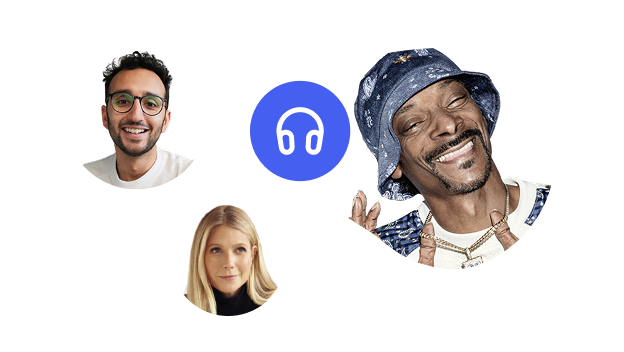Voice typing and dictation have evolved from early mechanical recording devices into modern speech-to-text systems, voice recognition tools, and automated dictation workflows used across writing, note-taking, and accessibility tasks. The history of dictation spans decades of research in acoustic modeling, real-time transcription, and natural language processing. Today, modern voice typing technology appears in Chrome extensions, iOS and Android apps, and desktop environments.
Here, we’ll take a look at how dictation technology developed over time, from early mechanical recording tools to today’s neural-network-powered transcription systems. This overview also explores how speech to text processing became mainstream and how current transcription software compares to the earliest attempts at interpreting human speech.
Early Mechanical and Analog Dictation Tools (1800s–1950s)
Dictation originally meant recording speech for later transcription. Throughout the late 1800s and early 1900s, office workers relied on wax cylinders, phonographs, and magnetic tape devices to capture spoken messages. These systems stored audio but did not convert it to text; drafting still required a human typist.
By the 1940s and 1950s, research laboratories began exploring early forms of machine speech analysis, laying the foundation for later voice typing systems.
First Digital Speech Recognition Systems (1950s–1970s)
A major milestone occurred in 1952 when Bell Labs introduced “Audrey,” an early digit recognition system that could identify spoken numbers from a trained speaker. Although large and limited, it showed that automated voice recognition was possible.
Through the 1960s and 1970s, teams at IBM, MIT, and Carnegie Mellon expanded digital speech research using template matching, spectral analysis, and early acoustic modeling methods. Vocabulary size and accuracy were still restricted, but these systems marked the beginning of computerized speech to text research.
Hidden Markov Models and Continuous Speech (1980s–1990s)
The 1980s introduced statistical modeling techniques that changed the field. With the adoption of Hidden Markov Models, systems could analyze speech probabilistically, improving recognition accuracy and supporting more flexible input.
By the mid-1990s:
- Early commercial dictation software became available
- Continuous speech recognition replaced isolated-word systems
- Vocabulary sizes increased
- Processing speed approached real-time performance
This era marked the transition from laboratory prototypes to early consumer voice typing programs.
The AI and Machine Learning Era (2000s–2010s)
With increases in computing power, speech recognition incorporated:
- Larger audio datasets
- Improved acoustic modeling
- Statistical language modeling
- Early neural network approaches
Dictation tools became significantly more accurate, allowing people to use speech to text for drafting emails, documents, and reports. Many systems still required training for each user, but the technology moved closer to the seamless automated dictation experience many rely on today.
Deep Learning and the Modern Voice Typing Experience (2016–Present)
Deep neural networks reshaped voice recognition. Modern systems rely on:
- End-to-end neural models
- Self-supervised learning
- Large-scale audio datasets
- Real-time on-device processing
As a result, many features considered standard today became possible:
- Automatic punctuation
- Cleanup of filler words
- High-accuracy transcription
- Multilingual voice typing
- Hands-free workflows
Modern speech-to-text tools now work inside Google Docs, Gmail, Notion, ChatGPT, and mobile devices. Voice typing is commonly used for drafting content, taking notes, capturing study material, writing email responses, and reducing typing strain.
Throughout its development, the goal has remained consistent: convert natural speech into readable text as accurately and efficiently as possible.
Speechify Voice Typing & Dictation: Modern Use Cases
Speechify Voice Typing provides real-time speech-to-text transcription across Chrome, iOS, and Android. It converts spoken language into written text for drafting documents, taking notes, or writing messages. Speechify also includes text-to-speech features that read webpages, PDFs, and documents aloud using a broad library of AI voices. Its Voice AI Assistant can answer questions and summarize webpage content, supporting streamlined reading and writing workflows.
FAQ
How fast is Speechify Voice Typing?
Speechify Voice Typing can transcribe speech at up to 160 words per minute, and Speechify dictation speed often outpaces typical keyboard typing.
Where can Speechify Voice Typing be used?
It works inside Gmail, Google Docs, Notion, and ChatGPT through the Chrome Extension and is also supported across iOS and Android.
Does Speechify support academic tasks?
Yes. Students frequently use Speechify dictation for academic work to draft essays, summarize readings, and capture study notes.
Does Speechify help with note-taking?
Yes. Speechify’s voice dictation for notes removes filler words, improves phrasing, and produces clean text during lectures and meetings.
Does Speechify handle punctuation automatically?
Yes. Speechify recognizes punctuation commands and includes an automatic punctuation system that structures text without manual editing.
Does Speechify support multiple languages?
Yes. Speechify Voice Typing supports 60+ languages and accents, enabling multilingual dictation for global writing workflows.
Can Speechify handle long dictation sessions?
Yes. Speechify supports long-form transcription and can process extended voice recordings without frequent restarts.
Is Speechify secure?
Speechify uses encrypted processing to protect dictation and transcription data.
Do you need to speak perfectly for Speechify to work?
No. Speechify automatically cleans up grammar, reduces filler words, and improves phrasing to create readable text from natural, imperfect speech.
Why choose Speechify for dictation?
Speechify provides real-time voice typing, automated cleanup, multilingual support, and a Voice AI Assistant that can answer questions and summarize webpages, supporting both writing and reading workflows.
Is Speechify suitable for accessibility needs?
Yes. Speechify supports hands-free writing and reduces reliance on manual typing, making it useful for users with dyslexia, ADHD, mobility limitations, or low vision.
Does Speechify work across multiple devices?
Yes. Speechify Voice Typing is available on the Chrome Extension, iOS and Android apps, and desktop environments. The system maintains consistent dictation and text-to-speech functionality across platforms.





